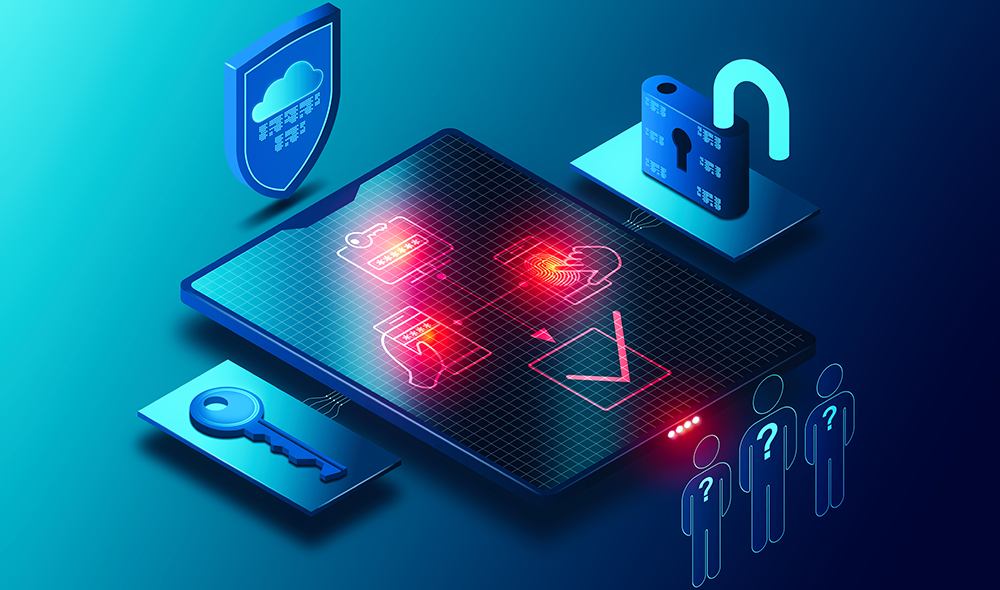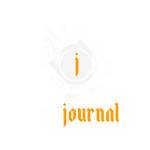In today’s digital landscape, securing blockchain applications from unauthorized access is of paramount importance. One effective method to enhance security is by implementing multi-factor authentication (MFA). This article explores the concept of MFA in the context of blockchain applications and provides insights into its benefits and best practices for implementation.
Understanding Multi-Factor Authentication (MFA)
Multi-factor authentication is a security measure that requires users to provide multiple forms of identification to gain access to a system or application. It adds an extra layer of protection beyond the traditional username and password combination. MFA typically involves three factors:
- Something you know: This refers to a knowledge-based factor, such as a password or PIN.
- Something you have: This factor involves possessing a physical token, smart card, or mobile device.
- Something you are: This factor includes biometric authentication methods, such as fingerprint or facial recognition.
By combining these factors, MFA significantly strengthens the security posture of blockchain applications, making it harder for unauthorized individuals to gain access.
Benefits of Implementing MFA in Blockchain Applications

Implementing MFA in blockchain applications offers several key benefits:
- Enhanced Security: MFA provides an additional layer of defense against unauthorized access and potential data breaches. Even if one factor is compromised, the attacker would still need to bypass the other factors to gain entry.
- Mitigation of Password-related Risks: Passwords can be easily forgotten, stolen, or guessed. MFA reduces the reliance on passwords alone, decreasing the risk associated with weak or compromised credentials.
- Protection of User Identities: By implementing MFA, blockchain applications can ensure that users’ identities are more robustly verified, reducing the risk of impersonation and unauthorized account access.
- Regulatory Compliance: Many industries, such as finance and healthcare, have regulatory requirements for strong authentication. MFA helps organizations meet these compliance standards and protect sensitive data.
Best Practices for Implementing MFA in Blockchain Applications
To effectively implement MFA in blockchain applications, consider the following best practices:
Selecting Appropriate Factors
Choose a combination of factors that align with the specific needs and user requirements of your blockchain application. Factors may include passwords, hardware tokens, mobile push notifications, SMS codes, biometrics, or a combination of these.
Applying Risk-based Authentication
Implement risk-based authentication mechanisms that analyze contextual factors, such as user location, device information, or unusual behavior patterns. This allows for adaptive MFA, where additional authentication factors are requested only when deemed necessary based on the risk level.
Streamlining User Experience
While security is essential, it’s important to balance it with a seamless user experience. Consider using user-friendly MFA methods and providing options for users to choose the factors that best suit their preferences and devices.
Regularly Updating Security Measures
Regularly review and update the MFA implementation as new technologies and authentication methods emerge. Stay informed about any vulnerabilities or security patches related to the MFA solution being used.
User Education and Awareness
Educate users about the importance of MFA and provide clear instructions on how to set up and use the authentication methods. Promote awareness of potential phishing attacks and encourage users to report suspicious activities.
Choosing the Right MFA Solution
When selecting an MFA solution for blockchain applications, consider the following factors:
- Scalability: Ensure that the chosen MFA solution can scale as your blockchain application grows. It should be capable of handling a large number of users and transactions without compromising performance or security.
- Compatibility: Check the compatibility of the MFA solution with your existing blockchain infrastructure and technology stack. It should seamlessly integrate with your application’s authentication mechanisms and APIs.
- Security Assurance: Evaluate the security features and certifications of the MFA solution. Look for industry-standard encryption protocols, secure key management practices, and compliance with relevant security regulations.
- User Experience: A user-friendly MFA solution is essential to encourage user adoption and minimize friction. Consider factors such as ease of setup, intuitive user interfaces, and flexibility in choosing authentication methods.
Implementing MFA in Blockchain Wallets
Securing blockchain wallets with MFA is critical as they hold users’ digital assets. Here are some considerations for implementing MFA in blockchain wallets:
- Hardware Wallet Integration: Explore integration options with hardware wallets that support MFA. Hardware wallets provide an added layer of security by keeping private keys offline and requiring physical authentication.
- Biometric Authentication: Leverage biometric authentication methods, such as fingerprint or facial recognition, for convenient and secure access to blockchain wallets.
- Mobile-based MFA: Utilize mobile-based MFA solutions that leverage push notifications or time-based one-time passwords (TOTPs). These methods can enhance the user experience and provide an additional factor of authentication.
- Recovery and Backup Options: Ensure that your MFA implementation includes robust recovery and backup mechanisms. In the event of a lost or damaged device, users should be able to regain access to their blockchain wallets securely.
Best Practices for MFA Management
Proper management of MFA is essential for maintaining a secure environment for blockchain applications. Consider the following best practices:
- Centralized Authentication Management: Implement a centralized authentication management system to streamline the administration of MFA for users. This ensures consistency and simplifies the enforcement of security policies.
- Regular Monitoring and Auditing: Continuously monitor and audit MFA usage and authentication logs to detect any anomalies or suspicious activities. Promptly investigate and respond to potential security incidents.
- Periodic Risk Assessment: Conduct regular risk assessments to identify potential vulnerabilities in the MFA implementation. Stay updated with the latest security best practices and address any identified risks promptly.
- User Training and Support: Provide comprehensive training to users on how to set up and use MFA. Offer robust support channels to assist users in case they encounter any issues or need assistance with MFA-related tasks.
Overcoming Challenges in MFA Implementation
Implementing MFA in blockchain applications may present some challenges. Here are strategies to overcome them:
- User Resistance: Some users may resist MFA due to perceived inconvenience. Educate users about the importance of MFA and its benefits in protecting their accounts and assets. Emphasize the seamless user experience and the added security MFA provides.
- Integration Complexity: Integrating MFA into existing blockchain applications can be complex. Work closely with MFA solution providers and consider leveraging pre-built libraries or SDKs to simplify the integration process.
- Usability and Accessibility: Ensure that the chosen MFA solution is user-friendly and accessible to a diverse user base. Consider factors such as multi-language support, accessibility options for individuals with disabilities, and compatibility with various devices and operating systems.
- Migration Challenges: If implementing MFA in an existing blockchain application, migrating users to the new authentication method can be challenging. Communicate the migration process clearly, provide support during the transition, and offer incentives or rewards to encourage user adoption.
The Future of MFA in Blockchain Applications
As blockchain technology evolves, the future of MFA in blockchain applications looks promising. Here are potential developments to look out for:
- Biometric Advancements: Advancements in biometric technologies, such as voice recognition and iris scanning, may offer more secure and convenient MFA options for blockchain applications. These advancements can further enhance user experience while maintaining a high level of security.
- Decentralized Identity Solutions: Decentralized identity solutions built on blockchain technology may revolutionize MFA in blockchain applications. These solutions provide users with control over their identities and streamline authentication processes across multiple blockchain platforms.
- AI-driven Authentication: Artificial intelligence (AI) can play a significant role in MFA by continuously analyzing user behavior and device characteristics to detect anomalies. AI algorithms can adapt authentication requirements in real-time, strengthening security and improving the user experience.
- Interoperability Standards: The development of interoperability standards for MFA in blockchain applications can simplify integration efforts and provide users with a consistent authentication experience across various blockchain platforms and applications.
Compliance Considerations for MFA
When implementing MFA in blockchain applications, it is important to consider compliance requirements. Here are some key considerations:
- Regulatory Standards: Understand relevant regulatory standards, such as GDPR, HIPAA, or PCI DSS, and ensure that the chosen MFA solution aligns with these standards. This helps maintain compliance with data protection and privacy regulations.
- Industry-specific Requirements: Different industries may have specific MFA requirements. For example, financial institutions may need to adhere to specific guidelines from regulatory bodies. Understand industry-specific requirements and choose an MFA solution that meets those standards.
- Auditability and Reporting: Implement MFA solutions that provide robust auditability and reporting capabilities. This enables organizations to track and monitor MFA usage, ensuring compliance with internal policies and external regulations.
Continuous Monitoring and Adaptation
MFA implementation is an ongoing process that requires continuous monitoring and adaptation. Here are some key practices:
- User Behavior Analytics: Implement user behavior analytics to monitor patterns and detect anomalies in user authentication behavior. This helps identify potential security threats or compromised accounts that may require additional authentication factors.
- Threat Intelligence Integration: Integrate threat intelligence feeds into the MFA system to stay informed about emerging threats and adjust authentication requirements accordingly. This ensures that MFA remains effective against evolving attack vectors.
- User Access Reviews: Conduct periodic user access reviews to validate the need for continued MFA usage. This helps identify inactive or outdated accounts that may pose security risks if left unmonitored.
User Experience and Adoption Strategies
Promoting user adoption and providing a positive user experience are vital for successful MFA implementation. Consider the following strategies:
- Education and Training: Educate users about the benefits of MFA and provide clear instructions on how to set it up. Offer training sessions or tutorials to help users understand the authentication process and address any concerns or confusion.
- Authentication Flexibility: Provide users with options to choose from a range of MFA methods that best suit their preferences and devices. This flexibility enhances user satisfaction and increases the likelihood of adoption.
- Transparent Communication: Clearly communicate the reasons for implementing MFA and how it enhances security for blockchain applications. Transparency and open communication can alleviate user concerns and build trust.
Conclusion
Implementing multi-factor authentication in blockchain applications significantly enhances security by adding additional layers of verification beyond traditional username and password combinations. By combining different factors, such as knowledge-based, possession-based, and biometric factors, MFA mitigates the risks associated with unauthorized access and protects sensitive data. To ensure effective implementation, organizations should select appropriate factors, apply risk-based authentication, streamline user experience, regularly update security measures, and prioritize user education and awareness. By incorporating MFA into blockchain applications, organizations can safeguard their systems and fortify the overall security of their blockchain networks.
I have over 10 years of experience in the Crypto industry and I have written dozens of articles on the subject. I am one of the leading experts in Cryptocurrency and my work has been featured in major publications such as Forbes, CoinDesk, and Bitcoin Magazine. I am also a regular contributor to CoinTelegraph and have been interviewed by numerous media outlets including CNBC, Bloomberg, and The Wall Street Journal. In addition to my writing, I am also an active investor in the space and have made successful investments in a number of projects including Ethereum, Bitcoin, and Litecoin.

